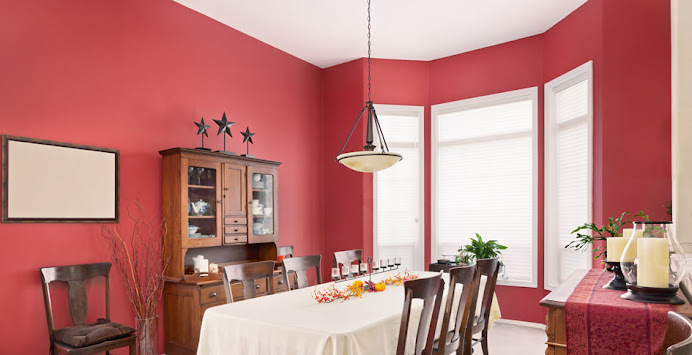How To Paint Kitchen Cabinets? A Step-by-Step Guide
Renovation
projects are always very exciting and lucrative for creative minds. However, it
can be overwhelming if you lack the proper knowledge to complete the project.
So, to help you achieve your goal, here is a step-by-step guide from the best kitchen cabinet painters in
Bowmanville.
1. Prepare
the Room
A
successful paint job lies in diligent prep work, and the first few steps are
focused on preparing the room and cabinets for painting.
-
Start by emptying the cabinets, clearing off
the counters, and removing any freestanding appliances.
-
Move the tables and other furniture to another
room or store temporarily.
-
Cover the countertops and floor to protect the
rest of the house from dust and fumes.
-
Tape plastic sheets where necessary e.g.,
windows and fixed appliances.
-
Mask the wall around the cabinets.
-
Set up a worktable for painting doors, drawers,
and shelves.
2. Remove
the Doors, Drawers, and Shelves
-
Mark the doors and front of each drawer with a
marker to avoid mixing up the doors. The best place for this mark is behind the
hinge location.
-
Back out the hinge screws from the cabinet
frame and remove the doors.
-
Working from left to right, top to bottom,
label each one with a numbered piece of tape.
-
Set aside shelf-handing hardware.
-
On the doors, transfer the number from the tape
to the exposed wood under one hinge.
3. Clean
the Surface
-
Clean the cabinet by spraying it with a
degreaser solution and wiping it down with a rag. This removes all the oils and
grease that could prevent a perfect final finish. If ordinary cleaners aren’t
working for you, use trisodium phosphate (TSP). Make sure to follow the
precautions before using this.
-
Once all cabinet pieces are clean, wash them
thoroughly with water and let them dry.
4. Prep
the Boxes
-
Before starting the work on boxes, open windows
for ventilation and wear safety gear. Using an abrasive pad, scrub down all of
the surfaces.
-
If you’re relocating the hardware, fill the old
screw holes with filler.
-
Vacuum the cabinets inside and out to make sure
no bits of dust mar the finish, then rub them with a cloth for extra measure.
5. Apply
the Primer
Now
it’s time to apply the primer. Note, if your cabinets are highly stained then
use a stain-blocking primer. It dries quickly and seals the other surface
defects that might cause problems during the topcoat.
6. Sand,
Caulk, and Fill
After
the primer is dry, sand the flat surfaces and make them smooth. A 220-grit
sandpaper is recommended. After doing the sand, caulk, and fill process, you
should finally move toward painting the cabinet.
7. Apply
the Paint
You
can choose a brush, roller, or spray paint depending on the availability. Make
sure to distribute the paint evenly everywhere and keep your hand moving for an
even coat.
8. Put
Back All Pieces
Once
the coat dries, reattach the doors and other pieces of kitchen cabinets. Enjoy the new
look of your kitchen and finally get the job done.
Are
you short on time and experience to get the job done? Hire the best kitchen
cabinet painters in Bowmanville from Newtone Painting. We guarantee
the best quality of our work.




Comments
Post a Comment